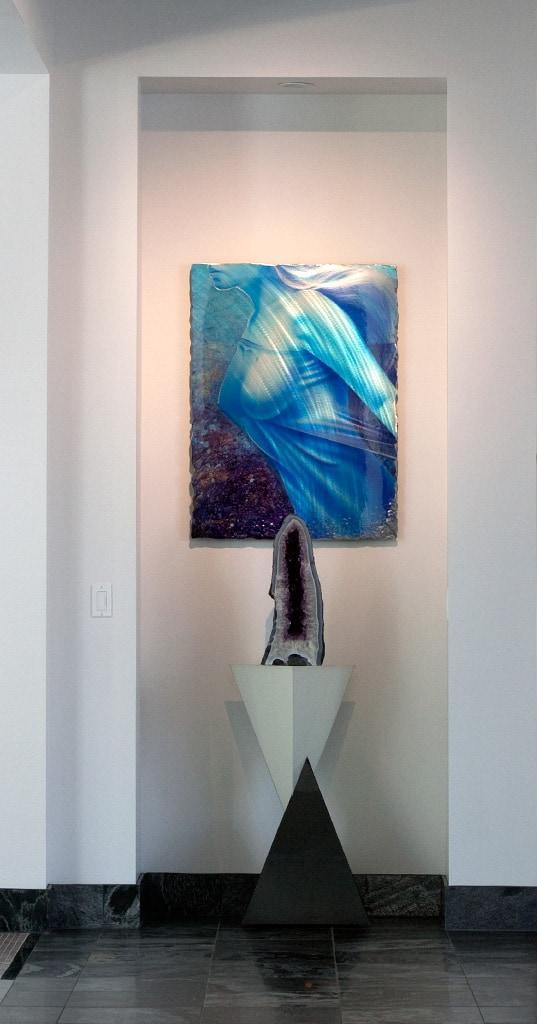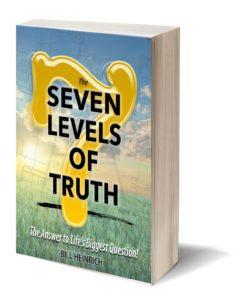
above: Brooklyn displayed in collectors home.
Who, What, When, Where, How...?
What do you know about the art on your walls? You hear a lot about provenance in the art world. As it should be – provenance is an important part of the art in your collection. Provenance is how you answer important questions, like who created the art, when it was created, sometimes where it was created, and hopefully how it was created.
Art provenance is the history of a painting, its creation, and ownership used to help establish its authenticity. Documents used for provenance include sales receipts, auction and exhibition catalogs, gallery stickers on the painting, letters from the artist, statements from people who knew the artist, or circumstances of the painting. These must mention the painting specifically enough for it to be identified, not in vague or broad terms.
— Painting.About.com
So What Is Provenance?
First off, let’s take a quick read of Wikipedia’s definition…
Provenance, from the French provenir, “to come from,” refers to the chronology of the ownership or location of a historical object. The term was originally mainly used for works of art but is now used in similar senses in various fields, including science and computing. Typical uses may cover any archaeological artifact, any paleontology object, certain documents (such as manuscripts), or copies of printed books. In most fields, the primary purpose of provenance is to confirm or gather evidence as to the time, place, and—when appropriate—the person responsible for creating, producing, or discovering the object. This will typically be accomplished by tracing the whole history of the thing up to the present. Comparative techniques, expert opinions, and the results of scientific tests may also be used to these ends, but establishing provenance is essentially a matter of documentation.
The provenance of works of fine art, antiques, and antiquities is of great importance, especially to their owner. There are several reasons why painting provenance is essential, which mainly also applies to other types of fine art. A good provenance increases the value of a painting, and establishing provenance may help confirm the date, artist, and, especially for portraits, the subject of a painting. It may ensure whether a painting is genuine of the period it seems to date from. The provenance of pictures can help resolve ownership disputes. For example, the origin between 1933 and 1945 can determine whether the Nazis looted a painting. Many galleries are putting a great deal of effort into researching the provenance of paintings in their collections for which there is no firm provenance during that period. Documented evidence of an object’s origin can help establish that it has not been altered and is not a forgery, reproduction, stolen, or looted art. Provenance helps assign the work to a known artist, and a documented history can be of use in helping to prove ownership.
The quality of provenance of an essential work of art can make a considerable difference to its selling price in the market; this is affected by the degree of certainty of the provenance, the status of past owners as collectors, and in many cases by the strength of evidence that an object has not been illegally excavated or exported from another country. The provenance of a work of art may vary significantly in length, depending on context or the known amount, from a single name to an entry in a scholarly catalog some thousands of words long. An expert certification can mean the difference between an object having no value and worth a fortune.
(edited for relevance – read wikipedia.org/wiki/Provenance for the complete definition)
It would be easy in this article to say what should be done or suggest that there is some “industry standard.” In many ways, that would be great. But in reality, that’s not the case. So, instead, I’ll express what I do as an artist to create and provide provenance in my creations. As an artist, I do everything from concept to completion in creating my artwork, and I take great pride in the art that bears my signature. I believe in creating and providing documentation of my art that validates its creation. My collectors deserve that. Let’s face it: In reality, my art will be around long after I’m gone, and as a dedicated artist, I believe I owe it to my collectors to verify and validate the creation of my art for them in any way I can.
The provenance of my art often includes:
In some cases, as in the video above, an artist interview with a featured artwork serves as provenance – watch my artist Q&A video with “Encore.”
You can also view videos from the individual art pages on this site. A complete list of my art-in-creation videos can be viewed anytime here.
In closing, authentic provenance is essential in understanding the value of your art. Not just monetarily, but as an informed collector, it’s critical to know your art’s history and the story of its creation. As an artist, I will always endeavor to create both authentic original art and viable provenance. My collectors deserve nothing less.
Provenance articles on other sites…
• International Foundation For Art Research – IFAR Provenance Guide
• Art Provenance: What Is It and How to Verify It by Alan Bamberger
• How to Collect and Buy Art: The Basics by Alan Bamberger
• Provenance: Ignore It At Your Peril – Forbes.com
- About the Author
- Latest Posts
- More info
A.D. is an artist who started drawing at a young age. Throughout his life, he has worked with different creative tools in traditional and digital art and design. His art and writings have been showcased in various publications such as Airbrush Action Magazine, Airbrush Magazine, American Art Collector, Art & Beyond, Dream To Launch, Easyriders, Las Vegas City Life, Las Vegas Weekly, L’Vegue, ModelsMania, Quick Throttle, and The Ultimate Airbrush Handbook.




